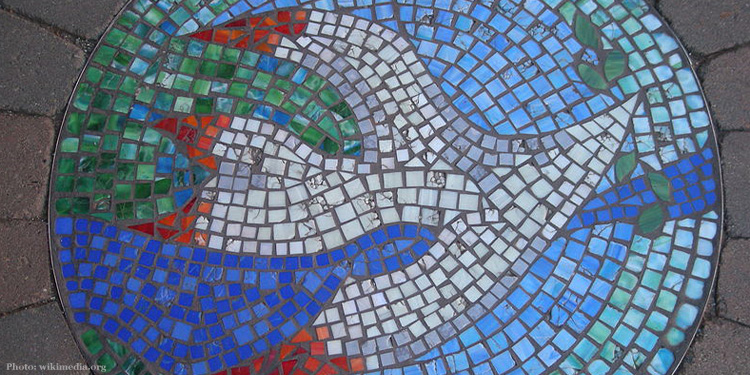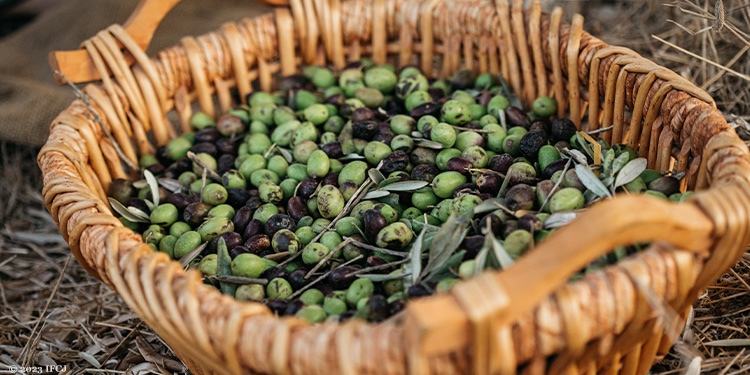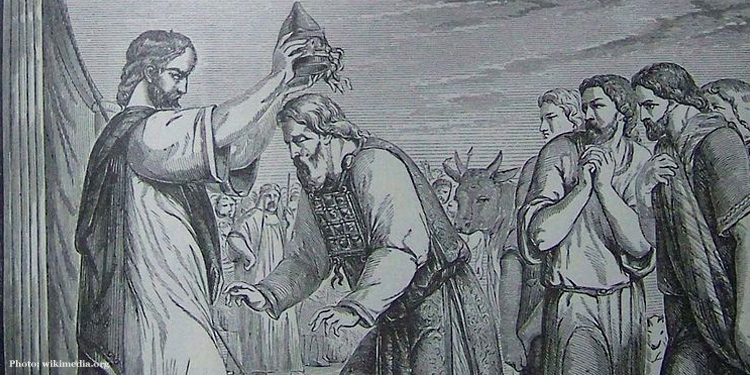What Is Shalom?

The concept of “shalom,” meaning “peace,” is deeply intertwined with the Jewish faith. In conversational Hebrew, shalom also means both hello and goodbye. When we ask someone how they are doing, we say “ma shlomcha?” And the traditional Sabbath greeting is “Shabbat Shalom,” a Sabbath of peace.
Shalom is the final word of many important prayers, such as the Priestly Blessing (Numbers 6:24–26), the Amidah (recited three times a day), and the Grace After Meals. With such great importance ascribed to shalom, it’s essential that we understand what it really means—and what it doesn’t. In this article, we will explore different aspects of shalom and discuss how we can work to achieve peace in our lives, in our homes, and in the world.
What Does Shalom Mean?
According to the Jewish sages, “Great is peace, for God did not find a vessel that could hold blessings other than shalom” (Tractate Chulin 57b). In other words, shalom is the blessing that makes it possible to receive all other blessings in life. In Jewish tradition, it is taught that when the Israelites received the Torah at Mount Sinai, they were “like one man with one heart.” When there is peace among man, we are showered with blessings from above. It is for this reason that the Priestly Blessing is summarized as a blessing of peace: “The LORD bless you and keep you; the LORD make his face shine on you and be gracious to you; the LORD turn his face toward you and give you peace” (Numbers 6:24-26).
People typically define peace as the absence of war, but in Jewish thought, it is so much more than that. Shalom is rooted in the Hebrew word shalem, which means “whole” or “complete.” Beyond a lack of conflict, shalom is the presence of wholeness. We don’t achieve wholeness by simply not fighting with those who are different from us, but by finding the good in one another and figuring out how to work together to bring the ultimate wholeness into the world—that of God.
In Psalm 29:11, we read, “The LORD gives strength to his people; the LORD blesses his people with peace.” While some may associate peace with the softness of compromise, this verse teaches us that peace actually comes hand in hand with strength. When diverse parties come together to create something bigger than themselves, they can achieve so much more than they can alone, like a beautiful mosaic that cannot be complete without each and every unique piece. When we have shalom, we become vessels strong enough to receive abundance from above and accomplish greatness down below.
Shalom in the World

The Bible lists a series of blessings that will come upon Israel if they follow God’s commands, including rain, crops, and shalom. When it comes to the promise of peace and security, Scripture promises that the few will defeat the many, something that has come true for Israel in both biblical and modern times: “Five of you will chase a hundred, and a hundred of you will chase ten thousand” (Leviticus 26:8).
The Jewish sages point out that if five Israelites can defeat one hundred of their enemies, then one hundred should be able to defeat two thousand, not ten thousand. They go on to clarify that the greater the unity, the greater the strength, teaching us that when we work together in peace, we become stronger than any of us alone.
In the first century BCE, Judea was ruled by a queen who brought peace to a nation fraught with violence. Her name was changed from Alexandra to Shlomtzion — “she who makes peace in Zion.” The Talmud describes how the produce grown during that brief period of time was unnaturally abundant; wheat grew to the size of kidney beans, oats to the size of olives, and lentils to the size of large coins.
This blessing was attributed to Queen Shlomtzion’s ability to restore peace in the land. In fact, the rabbis of the time even preserved some of the produce for future generations to show them what is possible when there is shalom. Here, we see another example of how peace between nations creates a vessel for material blessings of abundance.
Peace in the Bible

Aaron, the first High Priest of Israel, was one of the holiest people to walk this earth. However, more than anything else, he has become known as a man of peace. He spent his days amongst the people, solving conflicts between husbands and wives and working to strengthen struggling relationships. In fact, during his lifetime, many children were named for Aaron because it was only thanks to him that these children came to be.
Despite his lofty position, Aaron understood that creating peace in the home was his holiest service, for it is only when we have peace in our homes that we can hope to have peace within ourselves and in the world. If children grow up in a home of peace, they will learn to treat others with the same kindness, forgiveness, and respect with which they were raised.
In Numbers 5:23, we learn about the ritual procedure that was carried out when a woman was suspected of being unfaithful: God’s name was written on a piece of paper and dissolved in water that the woman would then drink. If nothing happened to her after drinking the water, then she would be deemed innocent and the marriage would be restored. The rabbis point out that God values shalom in the home so much that He is willing to sacrifice His own honor by having His name erased in order to restore harmony.
This teaches us that sometimes we need to swallow our pride and act with humility in the name of peace and unity. Sometimes, the bigger person is the one who knows how to make himself small, whether that means reaching out to someone to apologize or being the first to take responsibility for a conflict. As it says in Proverbs 20:3, “It is to one’s honor to avoid strife.”
How to Achieve Peace
Finally, in addition to achieving peace in the world and in our families, Judaism speaks of the importance of living in a state of inner, personal peace. The Elder of Kelm, a 19th-century rabbi in Russia, was known to say: “A person who has mastered peace of mind has gained everything.” God can give us money, health, children, and everything else we might wish for, but if we are not at peace, we cannot enjoy any of it. So, too, a person can live a life full of challenges, and yet, through it all, remain calm and rooted in shalom.
Inner peace is the ability to remain tranquil through the storms of life, while taking shelter under the wings of God. Again, peace isn’t the absence of difficulties in our lives, but rather being able to place our trust in God and find rest in His peace, despite what’s going on around us. As the prophet Isaiah reaffirms, “You will keep in perfect peace those whose minds are steadfast, because they trust in you. Trust in the LORD forever, for the LORD, the LORD himself, is the Rock eternal” (26:3-4).
What Are the Symbols of Shalom?

The Jewish sages taught that there are three symbols for peace: the river, the bird, and the kettle. In ancient times, a river was a way for people to meet and do business with one another. A bird, on the other hand, is the connection between heaven and earth, making its home on land, while flying high in the sky. Finally, the kettle brings together two opposing forces to create something good and powerful—fire wants to boil away water, and water seeks to extinguish fire, yet the kettle unites them to bring warmth to mankind.
In the Bible, God commanded the Israelites to construct the Tabernacle, a temporary structure that would serve as a sanctuary until the Temple would be built in Jerusalem. These sacred spaces would serve as conduits for shalom, manifesting these three symbolic qualities. Like a river, they would be a place of human connection, a meeting point for the pilgrims who would come on the three festivals. Like a bird, they would connect between the infinite and the finite, providing a space for human beings to experience and communicate with God and a place for God’s presence to dwell on earth. Like the kettle, the Tabernacle and Temple were meant to bring people together in unity over their shared faith and service to God, despite their different beliefs, opinions, and lifestyles.
While we no longer have these holy structures, the sages teach that each individual can cultivate a place for God to dwell within his or her heart, thereby becoming a mini-sanctuary, a conduit for shalom. We can become a living embodiment of the wisdom of the Torah, of which it is written: “Her ways are pleasant ways, and all her paths are peace” (Proverbs 3:17).
Each of us can build bridges between people, between heaven and earth, and between opposing forces in the world. Whether it is global peace, peace in our homes, or inner peace, we must always strive to put our trust in God and work together with others to bring godliness and shalom into the world.
